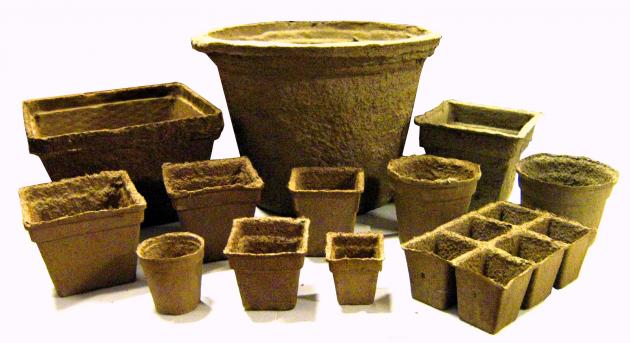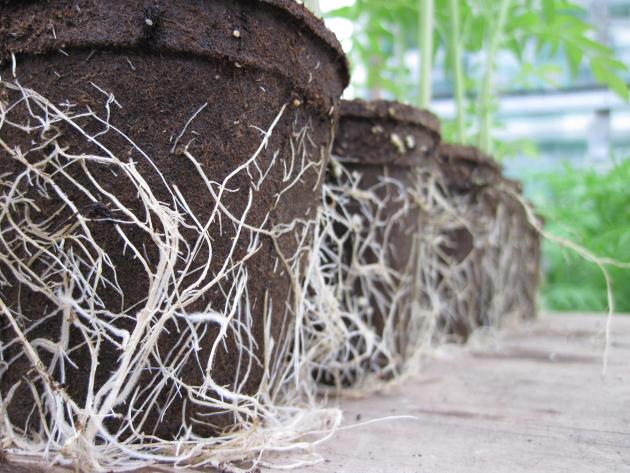Can Anaerobic Digestion Lead to Additional Revenue Streams On a Dairy Farm?
CowPots are the invention of necessity. Brothers Matt and Ben Freund are second generation dairy farmers in the northwest hills of Connecticut. In dairy farming, the most challenging job is to manage the nutrient stream in an environmentally sound manner. In 1997 the brothers installed a methane digester to heat the manure coming out of a cold barn to be able to separate the liquid year round for field application with a drag line system. This made the farm much more efficient and timely while at the same time reducing soil compaction and improving crop yields. The solids which are composted were first used for bedding the herd and are now used to mold the CowPots, whose value far exceeded bedding value. Farmers and gardeners have always considered cow manure a wholesome organic soil amendment for their crops. The challenge was to find a new and better way to get manure to these soils while maintaining value to consumers.
CowPots are a patented, environmentally friendly product made from the nutrient rich manure and are a vehicle for exporting the farm’s excess nutrients. Through production and sales of CowPots the Freunds have reduced the nutrient load on their farm by approximately 11% and have added a significant 2nd income to the dairy operation.


Emblems of sound stewardship, CowPots are the ideal product for farmers, growers, gardeners — and for the planet.
What did we do?
The idea for using manure solids to fashion a horticultural pot occurred in the mid 1990’s. The dairy farmer’s wife, Theresa owns a seasonal farm market and garden center adjacent to the dairy farm. Matt noticed that when his wife was tilling the soil each spring, the supposed biodegradable pots were still fully intact.
Confronting stricter regulations on nutrient management through state and federal rules, he needed an alternative to the status quo of storing and spreading manure on their 260+ cow dairy farm. Comparing the fibers found in the peat pots to the fibers of the manure solids, he brought his idea to the kitchen. In Matt’s spare time he began forming, pressing, pasting and molding manure fibers into pots (initially working in the greenhouse and using equipment from his wife’s kitchen and not wanting to get divorced, he moved outside to the farm shop). Nearly a decade was spent experimenting through trial and error.
In the mid 2000’s a production prototype was constructed in one bay of the farm shop where 4” pots were formed and placed by hand onto a drying oven. In 2006, CowPots worked with a local company to shrink wrap stacks of pots and sold them for resale at local garden centers and hardware stores in the tri-state area. That same year Freunds received an SBIR grant to further investigate the horticultural benefits of growing in CowPots. Concurrently, UConn and Cornell University conducted trials in greenhouse settings. In 2009, a standalone manufacturing facility was built and the lineup of sizes offered grew. Today the Freunds manufacture 12 size pots for horticultural uses as well as custom shapes for customers.
What have we learned?
Freunds have learned not all dairy fibers are the same. There are numerous activities on any farm which affect the characteristics of this material. Changes in feed, added minerals, digester upsets,composting temperatures, duration in the in-vessel composer and pasturing the herd have been the most influential on Freund’s farm.


Future Plans
The Freunds had many goals one of which was not to have CowPots dictate the management of the dairy. Every bucket of manure fiber needs to be tested before it is used for production of CowPots. The equipment is adjusted in response to any changes.
Another goal was to design a production facility with no waste stream. Dry matter of the fiber is very important to achieve this goal. By having nothing but water vapor and finished product exiting the facility, permitting becomes much less difficult and our footprint becomes much smaller.
The CowPots manufacturing facility is fast approaching their production capacity with shifts that run 24/6. New automation in the packaging system will be installed in the coming months for a total of three robots in the facility. Currently, Freunds are putting together an expansion plan to include an additional production line. They are also working with a company in a similar business to look for synergies. Freunds are investigating other waste streams which could be blended with CowPots products to make the end product even better and at a reduced cost. Recently an engineer came on board to identify production inefficiencies within the manufacturing system to help reduce costs. As the market builds, Freunds will be looking for partners to work with in different areas of the country.
Author
Matt Freund, Owner/Inventor matt@cowpots.com
Additional information
https://www.youtube.com/user/CowPots
Acknowledgements
Northeast SARE, SBIR, USDA NRCS and Rural Development, CT Dept of Agriculture and CT Dept of Energy and Environmental Protection
The authors are solely responsible for the content of these proceedings. The technical information does not necessarily reflect the official position of the sponsoring agencies or institutions represented by planning committee members, and inclusion and distribution herein does not constitute an endorsement of views expressed by the same. Printed materials included herein are not refereed publications. Citations should appear as follows. EXAMPLE: Authors. 2015. Title of presentation. Waste to Worth: Spreading Science and Solutions. Seattle, WA. March 31-April 3, 2015. URL of this page. Accessed on: today’s date.

